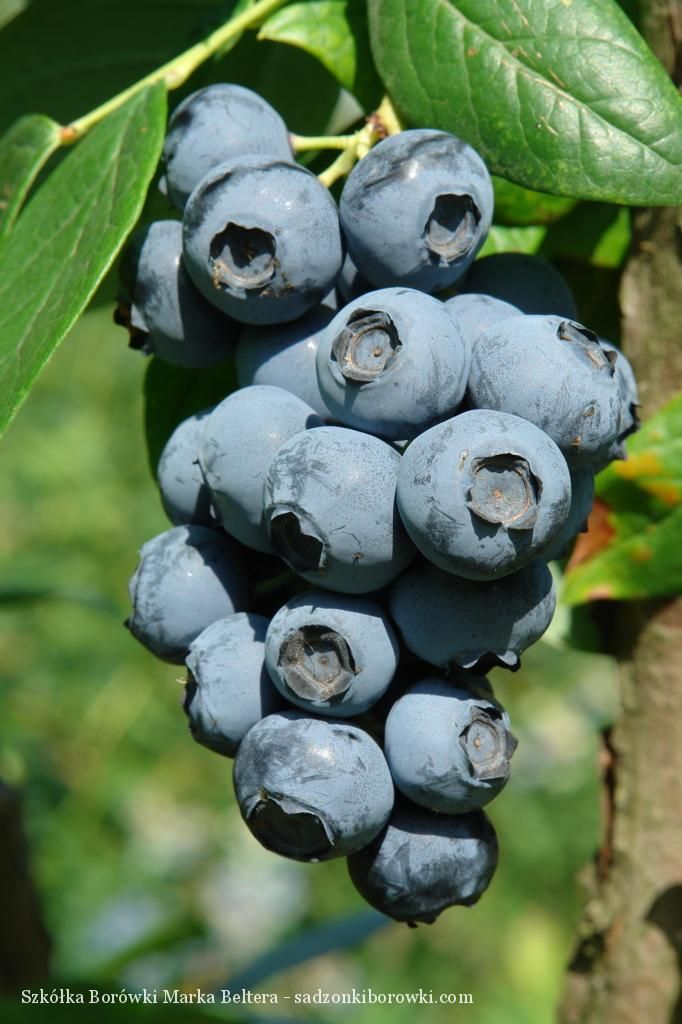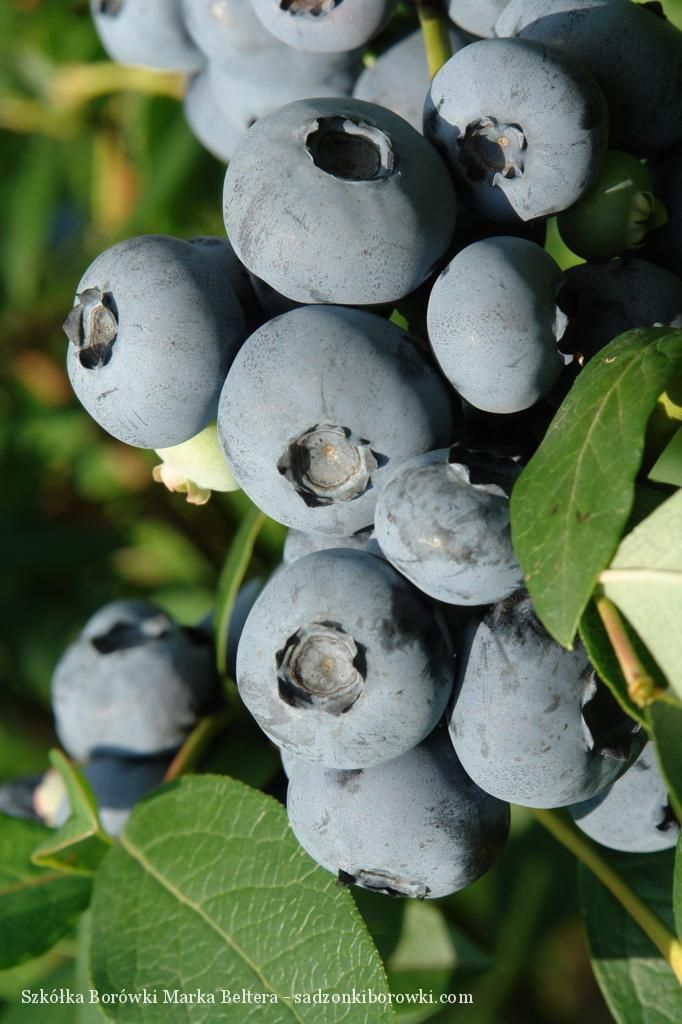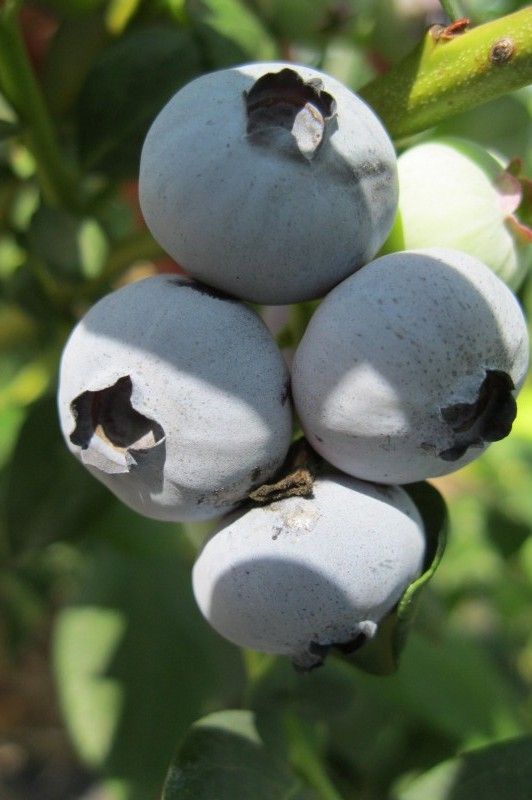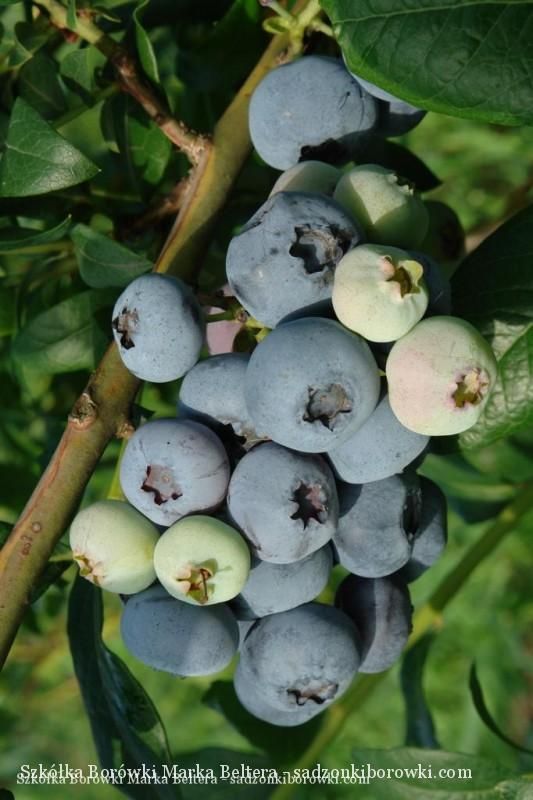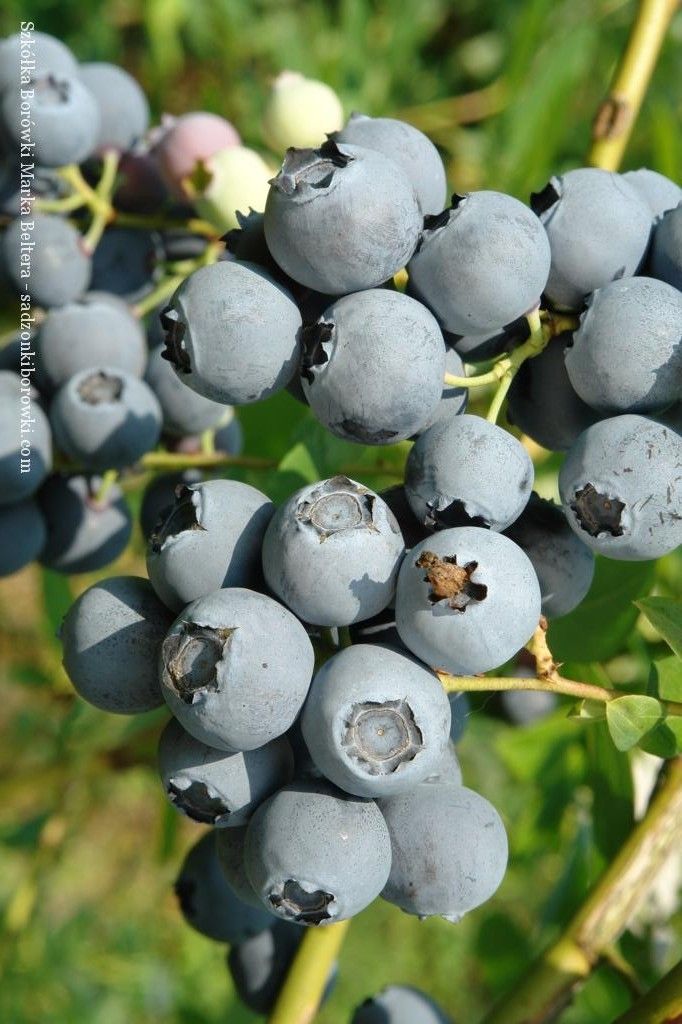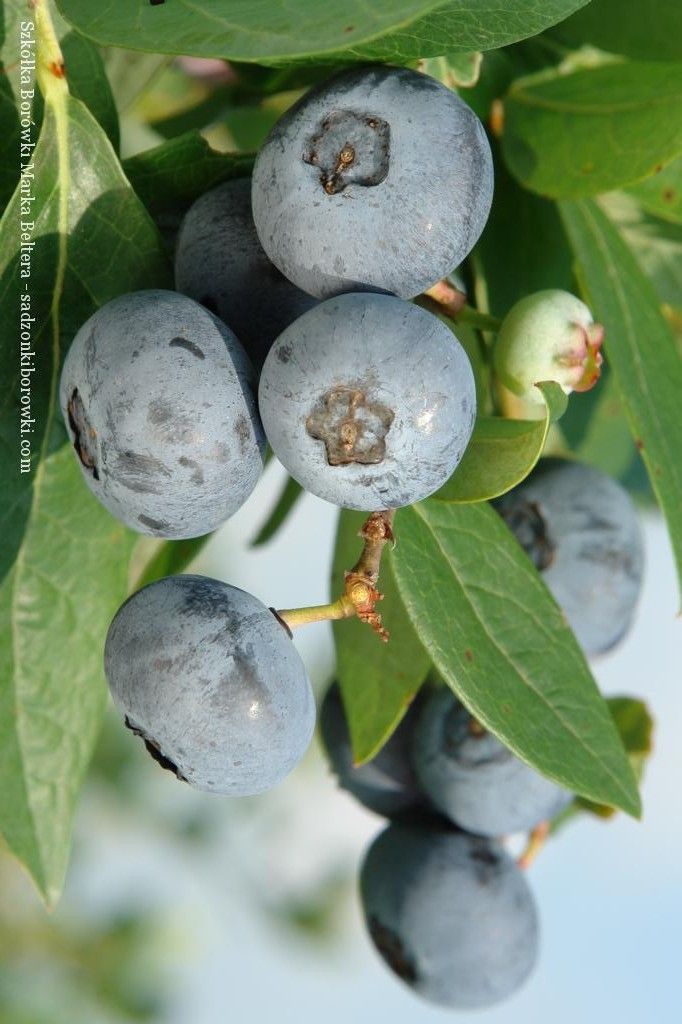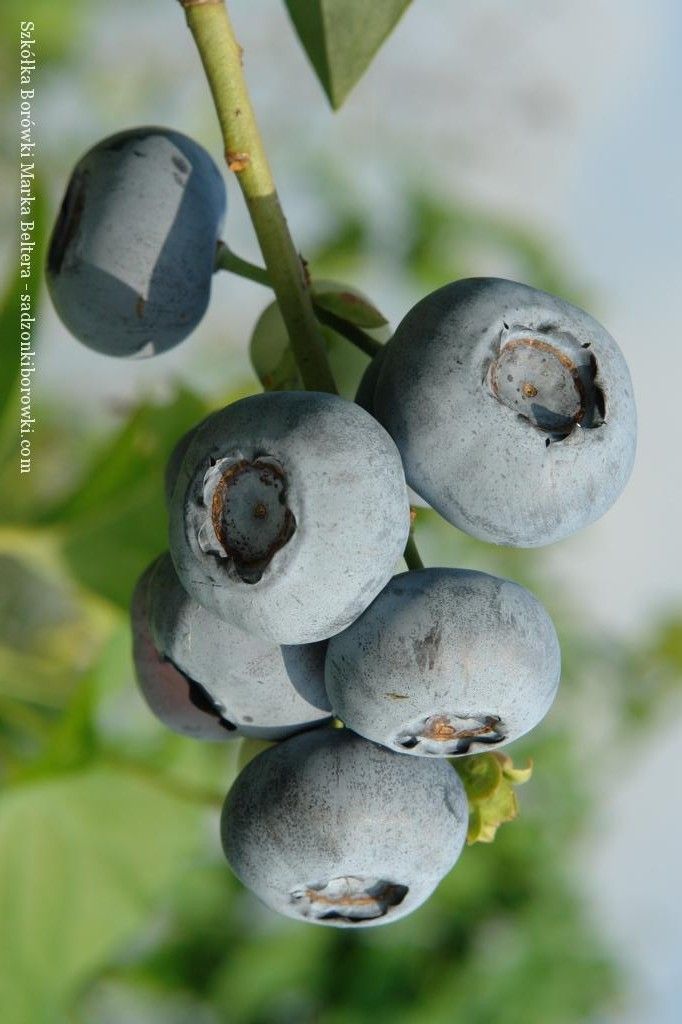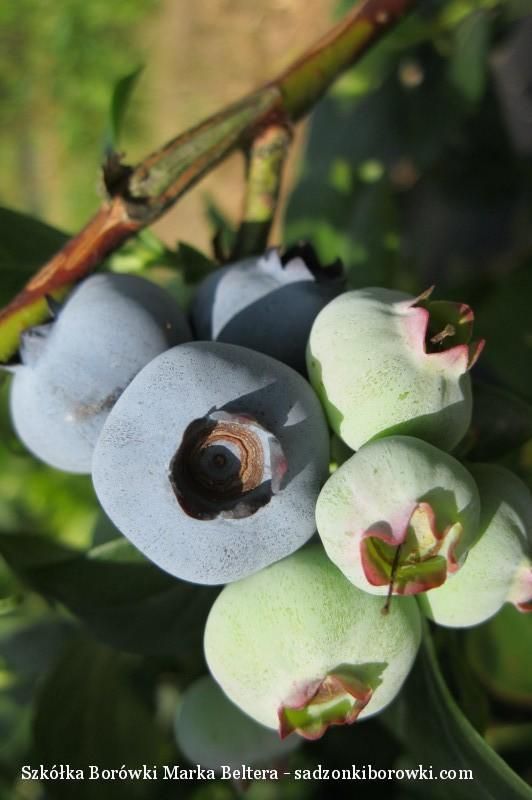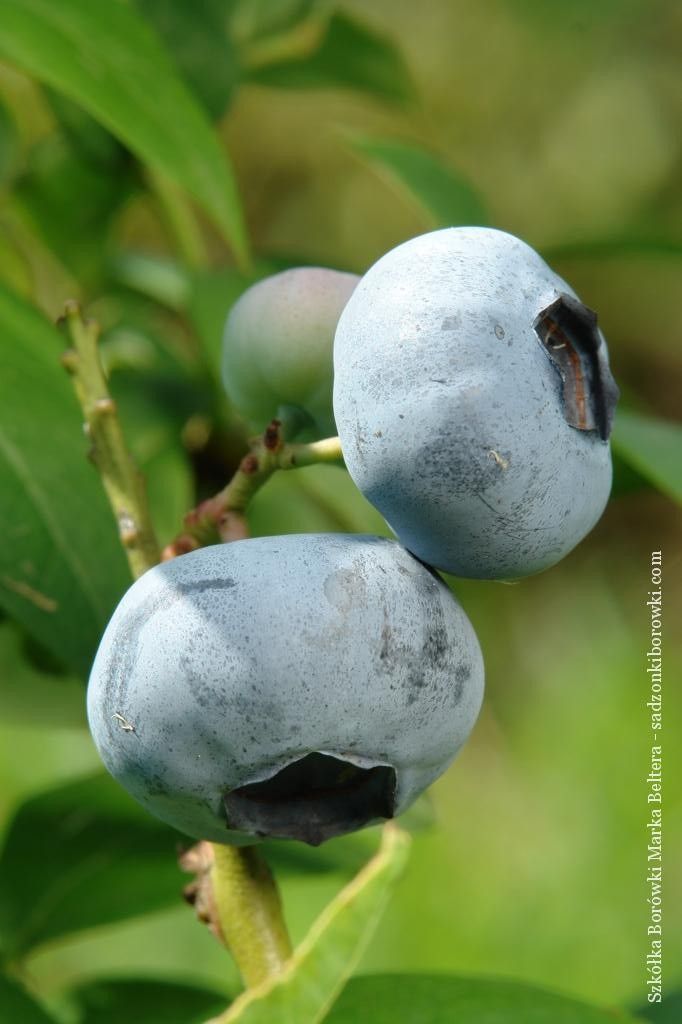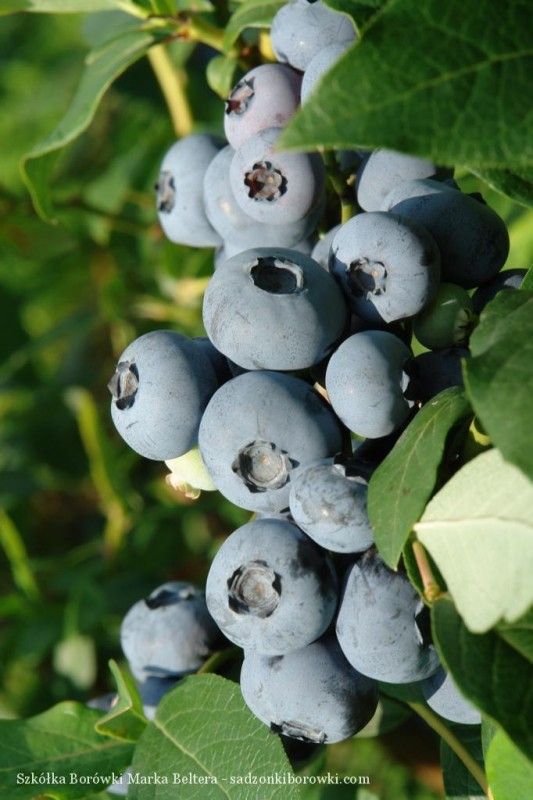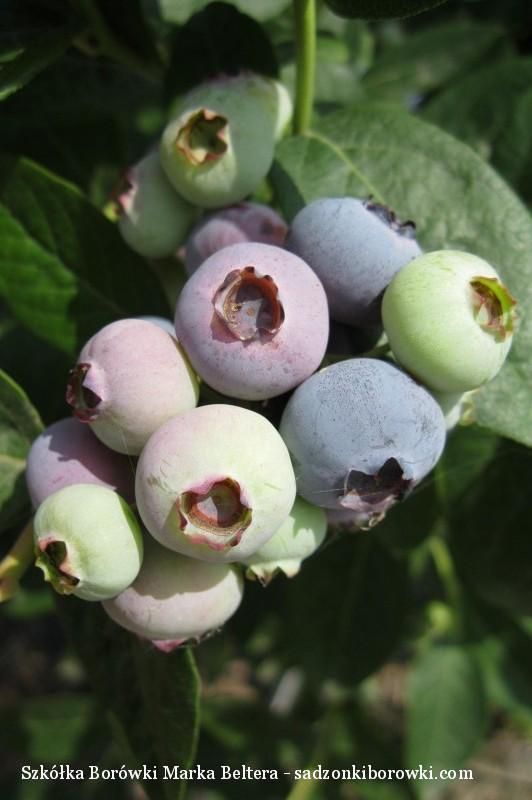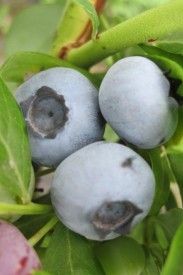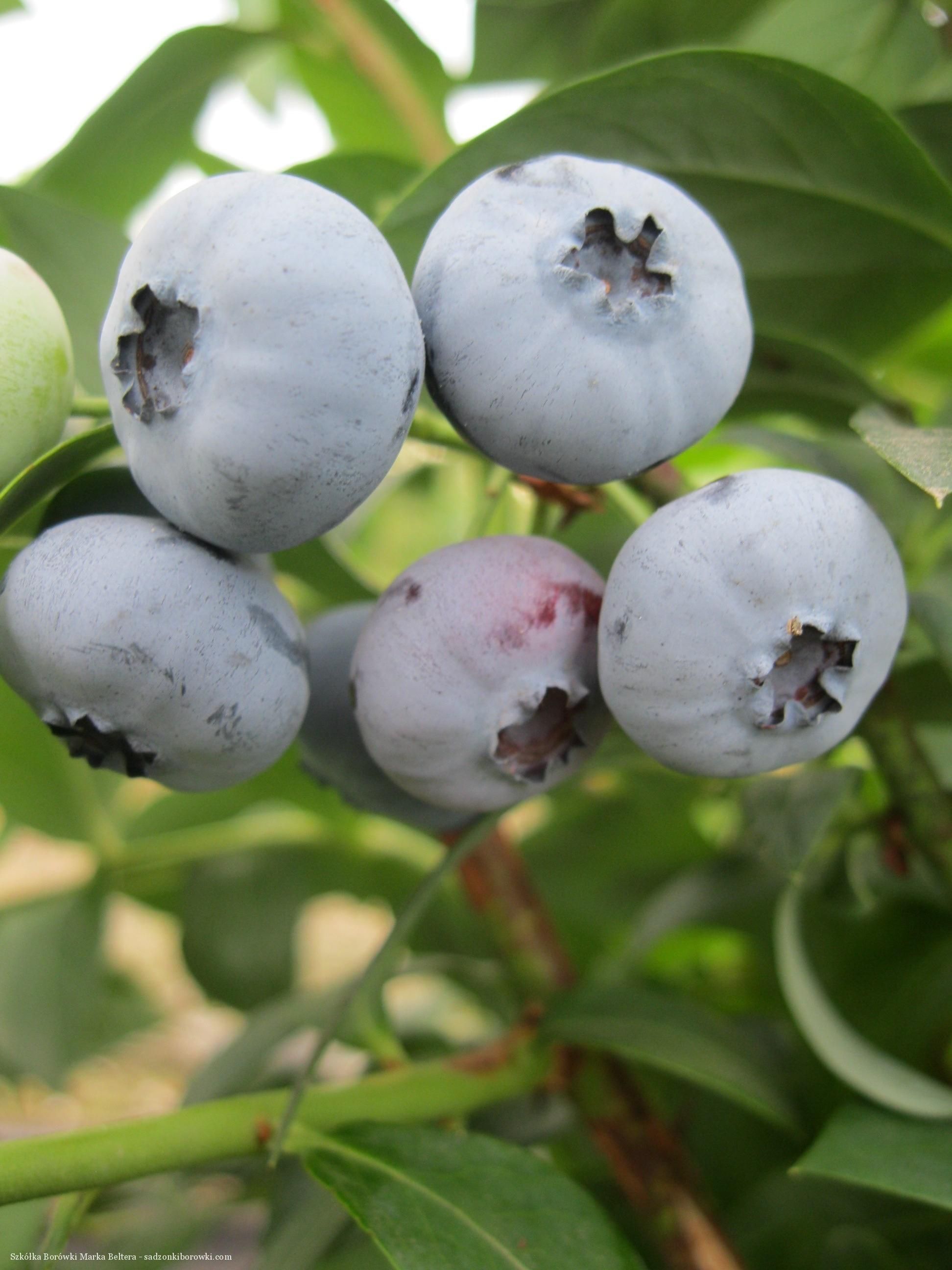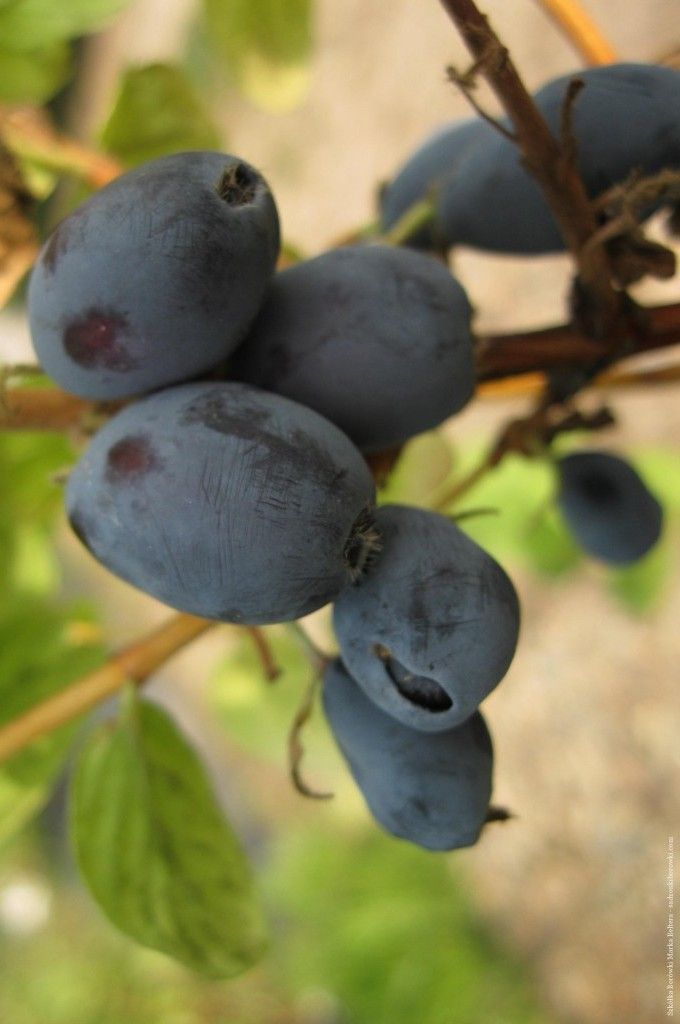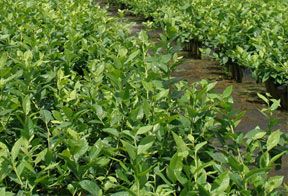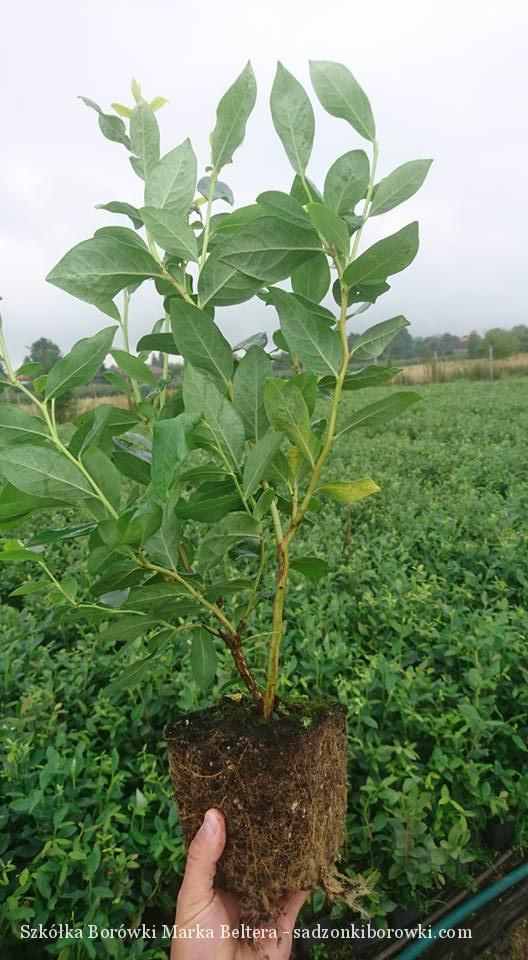Szkółka borówki amerykańskiej
Plants for your plantation and home
We offer a wide selection of blueberry plants and useful information about planting and growing blueberries. Our knowledge, experience and professional help may become an important asset in the development of small and large plantations of this delicious fruit.
Thanks to our decades of experience we can not only offer you different varieties of the increasingly popular highbush blueberry plants, but provide professional advice on which varietiess are most suited to your objectives and how to develop a successful plantation. I invite you to visit our nursery and view my entries on the blueberry blog.
Zapraszam



Tradition:
Our grandfather and his brothers were among the pioneers of pomology and estblished some of the first fruit plan nurseries in pre-war Poland. Professor Aleksander Rejman, my grandfather’s brother, together with his professional colleagues introduced the highbush blueberry to the Polish market.

Attractive prices:
We make every effort to keep our prices attractive and very competitive.For large wholesale orders prices are negotiable.

The
highest quality blueberry plants in Poland:
We pride ourselves on not only the fact that our plants are among the best in Poland, but also on the approach to our customers. We are not just an ordinary dealer, but also advise and suggest selection of varieties.

Modern nursery:
In our nursery, we grow many different varieties of blueberries and work on continuous improvement of the process of mechanical harvesting.
Plants for sale:
We offer a full line of plants; from early to late varieties; and know first hand what varieties are best for fresh pack, U-pick, or commercial growing.
We grow about 30 different varieties of northern highbush blueberries and one variety of honeyberry ( Lonicera caerulea). Parental stock is constantly rejuvenated and updated with new varieties. The nursery is certified by the Regional Inspectorate for Plant Protection and Seeds.
Customer satisfaction and the future success and profitability of plantations started by our customers are the driving factor for all of our decisions regarding plant selection and quality. We make every effort to produce healthy, strong and fruit beating material. All of our customers are provided with professional advice on preparing a successful plantation, including soil preparation, planting, fertilizing and ongoing care of the plants. The advice does not stop at the point of sale but continues throughout the plant development.
Growing blueberries is our business but also our passion and we have established ongoing relationships with many of our customers.If you are interested in growing blueberries feel free to contact us.
Quality
Plants
offered by our nursery are qualified two-year CAC material.
The plants are
certified by the Regional Inspectorate for Plant Protection and Seed Division
in Rzeszów.
Our
plants are propagated vegetatively from material taken from our best plants.
The
nursery belongs to the "Blueberry Growers Association".
Price
Blueberry
- The retail price of 13 PLN
- The wholesale price of PLN 9 (buying more than 100 pieces.)
Honey Berry (Lonicera caerulea var. kamtschatica)
- Retail price: 13 PLN
- Wholesale price: 9 PLN (purchase more than 100 pieces.)
EARLIBLUE:
Description:
A cultivar obtained by hybridization of Stanley and Weymount. Grows vigorously with stems resistant to bending under the weight of berries. Large and medium sized berries gathered in loose clusters.
Ripening season:
Earliblue is an early variety. Matures in the first half of July
Commercial Advantage:
Firm berries, do not rupture.
Classification:
Early variety.
DUKE:
Description::
This plant is characterized by lofty and rigid stems growing up to 180 cm. Berries are large, slightly flattened growing in loose clusters. Bushes of this variety bloom late, soon after spring frosts.
Ripening season:
It ripens in the first half of July.
Commercial Advantage:
Suitable for mechanical harvesting, but due to the abundant yield of the plant requires strong pruning.
Classification:
Early variety.
SPARTAN:
Description:
One of best flavored blueberries, with fruts starting very large but becaming smaller as the plant ages. Spartan can be particular about soil types, requiring a site with light, well-drained soils and abundant organic matter.
Ripening season:
Second half of July.
Commercial Advantage:
Spartan is known to be the tastiest early varieties. The disadvantage is diminishing size of berries as the plant ages. The plant requires soils with high permeability and suitable PH. The variety is suitable for mechanical harvesting.
Classification:
Early variety.
PATRIOT:
Description:
Low growing bush reflects its partial lowbush parentage. The plant takes a slightly flattened shape with stems not exceeding 120 cm. It has a very large fruit during the first harvest. Later harvests produce berries that are smaller than those of the first crop. The berries grow in dense clusters, which sometimes contributes to the distortion of the shape of the fruit.
Ripening season:
An early variety. It ripens in the last decade of July.
Commercial Advantage:
Patriot is one of the most valuable early varieties. It is very fertile and adaptable to many soil types.
Classification:
Early variety.
SUNRAISE:
Description:
Plants are moderately vigorous, upright. The variety is moderately fertile producing even flattened berries. The advantage of this variety is relatively early ripening fruit. Ripe berries often fall.
Ripening season:
Ripening season is in mid-July.
Commercial Advantage:
Variety recommended mainly for cultivation by home gardeners as a dessert variety of attractive-looking fruit.
Classification:
Early variety.
BLUECROP:
Description:
This is the leading commercial variety. Consistent high yield, high quality fruit.
Ripening season:
It ripens in the first days of August. The fruit is large, strong growth.
Commercial Advantage:
Resistant to frosts and droughts, grows strongly and matures at the end of July. It is a very good variety, considered best for high producing plantations. This is the most planted blueberry bush, used in over 50% of plantings.
Classification:
Mid season variety.
BLUEJAY:
Description:
The plant blooms relatively late. Fruit is resistant to bursting and falling.
Ripening season:
End of July.
Commercial Advantage:
The variety is suitable for mechanical harvesting, more than 70% of the berries mature at the same time. Bushes are sensitive to prolonged drought, which results in small berries.
Classification:
Mid season variety.
CROATAN:
Description:
Berries grow in very dense clusters, the plant has low frost resistance, the berries ripen unevenly.
Ripening season:
It blooms quite late, but the berries ripen in the first half of August.
Commercial Advantage:
Variety fertile characterized by vigorous growth. Strong pruning required to avoid small berries.
Classification:
Mid season variety.
TORO:
Description:
A hybrid of Earliblue and Ivanhoe. Vigorously growing with rigid stems, berries are large gathered in long clusters resembling grape clusters.
Ripening season:
Second half of August.
Commercial Advantage:
The fruits are firm matt blue, evenly ripened.
Classification:
Mid season variety.
CHANDLER:
Description:
Plant with stiff stems and very large fruit of 2.5 cm in average diameter . The bush is characterized by strong branching habit. Apart from a very large fruit an additional advantage of this variety is extended fruiting period which lasts 4-6 weeks.
Ripening season:
Medium early first fruits harvested as early as mid-July, harvesting period is extended to 4-6 weeks.
Commercial Advantage:
Probably the largest fruit. Recommended for home gardeners. If due to very long period of fruiting / harvesting.
Classification:
Late variety.
BLUEGOLD:
Description:
Round and compact bush. It grows very short and thick. Requires pruning for better berry coloring.
Ripening season:
This variety ripens a little later than Bluecrop. The fruits are quite large and have very distinct bright coating.
Commercial Advantage:
The variety is suited for home gardeners.
Classification:
Mid season variety.
BONUS:
Description:
Size of fruit very similar to Chandler. Fruits are very large with a small picking scar and light blue coating. Variety fertile to 6kg per plant.
Ripening season:
Second half of July.
Commercial Advantage:
Variety is very attractive for cultivation because of the fertility and fruit size.
Classification:
Mid season variety.
DARROW:
Description:
Late season blueberry variety that produces large berries and is highly rated for its flavor. The plant is very vigorous and grows upright. With proper pruning it produces large and shapely berries.
Ripening season:
It falls very late, because late August or early September.
Commercial Advantage:
Berries are ideal for desserts.
Classification:
Late variety.
HERBERT:
Description:
Variety named after the grower Herbert Beebe. Plant vigorous and wide spread growth with very large spherical fruit in large open clusters. It is an abundantly fruiting variety.
Ripening season:
Second half of August.
Commercial Advantage:
Blueberries do not lose their flavor and aroma in the cool days of late summer. Fruits are ideal for homemade preserves and frozen foods.
Classification:
Late variety.
ELIZABETH:
Description:
The fruit of this variety are among the tastiest but it has rather low fertility.
Ripening season:
End of August.
Commercial Advantage:
Variety recommended mainly for home gardeners as a dessert variety with large dark-blue fruits.
Classification:
Late variety.
NELSON:
Description:
It was selected from crosses of Bluecrop and Berkeley and seems to have inherited Bluecrop’s flavor and Berkeley’s giant size. Quality of the fruit is very good. Berries are firm. Picking scars are small and berry color is a dark blue. The berries are relatively large, quite firm, and have good shelf life. The fruit may be harvested by hand or mechanically.
Ripening season:
Second half of August.
Commercial Advantage:
Blueberries do not lose their flavor and aroma in the cool days of late summer. The variety requires warm, moist but not waterlogged soils. It is suitable for mechanical harvesting.
Classification:
Late variety.
BRIGITTA BLUE:
Description::
A late season variety producing large, light blue fruits on sturdy upright bushes that ripen in August. The firm, tasty fruits have a crisp texture making them ideal for freezing as well as eating fresh from the bush. 'Brigitta' is ideal for growing with other blueberry varieties as it is not reliably self fertile, requiring cross pollination for a good crop.
Ripening season:
The fruit is medium in size and ripens in mid-August.
Commercial Advantage:
The fruit is very well able to tolerate transport and cold storage. This variety is suitable for mechanical harvesting.
Classification:
Late variety.
LATEBLUE:
Description:
The plant is characterized by vigorous growth and thickening with small stems. The variety has average fruit size growing on long stalks that often remain on the fruit, and are visible in the container. Yield can is average.
Ripening season:
Mid-September to October.
Commercial Advantage:
Variety recommended for cultivation in the warmer parts of the country as during cold autumn days berries may not have enough time to ripen.
Classification:
Late variety.
ELIOTT:
Description:
In similar way as Lateblue the berries ripen very late and should be grown in warmer areas of the country. Variety require significant pruning.
Ripening season:
From early September to mid-October.
Commercial Advantage:
Attractive for cultivation due to the late ripening of the fruit and the suitability for long cold storage.
Classification:
Late variety.
JAGODA KAMCZACKA
Description:
Honeyberry was domesticated relatively recently, it is grown commercially only since the second half of the twentieth century. It grows relatively densely. The plants may take three or four years to produce an abundant harvest.
Ripening season:
It ripens in mid-June, like strawberry.
Commercial Advantage:
Used in processed products, such as pastries, jams, juice, wine, ice cream, yogurt, sauces, and candies. It can make excellent wine similar in color and flavor to red grape or cherry wine.
Most of our blueberry plants are 2 year old bushes. Here is how to take care of them:
STANOWISKO BORÓWKI:
It should be sunny or semi-shaded, permeable moist soil, acidic, PH 3.5-4.8, sandy with plenty of humus. To properly prepare the stand dig a hole with a diameter of 80 cm. and a depth of 40cm. Fill the hole with prepared acidic peat (about 50 liters), mixed with sand or forest soil. You can add the bark of conifer or composted sawdust.
PIELĘGNACJA:
Highbush blueberry is an environment-friendly plant that can be successfully cultivated without the use of chemicals. However, in case you experience aphid infestation you will need to either apply spray treatment or eliminate the insects mechanically. Irrigation is an important factor in running a successful plantation. Each plant should receive 10 to 20 liters of water per week. Blueberry plantation takes time and patience.
NAWOŻENIE:
The easiest approach is to use dedicated blueberry fertilizer found in gardening shops. You can also apply slow release fertilizers such as Plantacote or Osmocote. If the bush growth is weak, the leaves are small and light colored apply a solution of ammonium sulfate at a dose of 1 level tablespoon of fertilizer for 8-10 liters of water every 10 days from the beginning of May to the end of June. Watering with a solution of ammonium sulfate at doses as described above is also recommended for the young plants. Well taken care of blueberry bushes will give you bountiful harvest.
